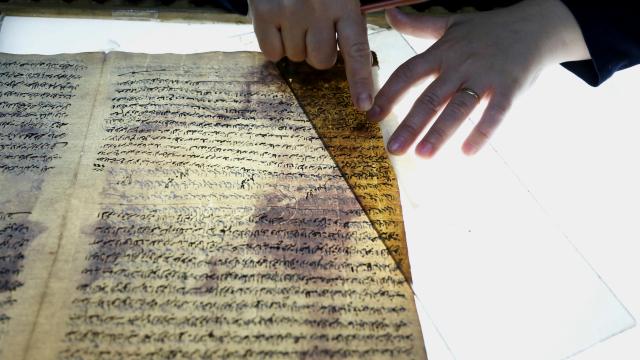Like so many bully regimes before it, the Islamic State has a talent for propaganda. A big part of that effort is documenting the destruction of everything from architecture to artefacts, even if they’re unwittingly destroying replicas. In Iraq, the cultural heritage is real — and so is the threat.
Baghdad’s National Library is home to thousands of priceless books and manuscripts, and as the AP reported this week, it’s a cache of centuries-old knowledge that is currently under threat by ISIS. As a result, librarians are on a mission to preserve and eventually digitize the most important texts:
In darkrooms in the library’s back offices, employees use specialised lighting to photograph some of the most-precious manuscripts… Mazin Ibrahim Ismail, the head of the microfilm department, said they’re testing the process with documents from the Interior Ministry under Iraq’s last monarch, Faisal II, who ruled from 1939 to 1958.
“Once restoration for some of the older documents from the Ottoman era, 200 to 250 years ago, is completed, we will begin to photograph those onto microfilm,” Ismail said. He said the digital archives, which will not be made available immediately to the public, is more to ensure their contents survive any future threat.
Why Microfilm?
Unless you work with archival processes, microfilm sounds like a completely outdated technology. Yes, microfilm does date back to the 1870s, but it’s far from outmoded.
While it may be cheaper and easier to digitize a book directly, without committing it to microfilm or some other physical medium, it’s not anywhere near as stable. Consider how wildly our digital storage tech has changed within the last decade or three, and you’ll see why most librarians are leery of depending solely on digital archives. If a library depends on digital archives, then it has to also depend on a storage medium that’s constantly being outmoded and upgrades.
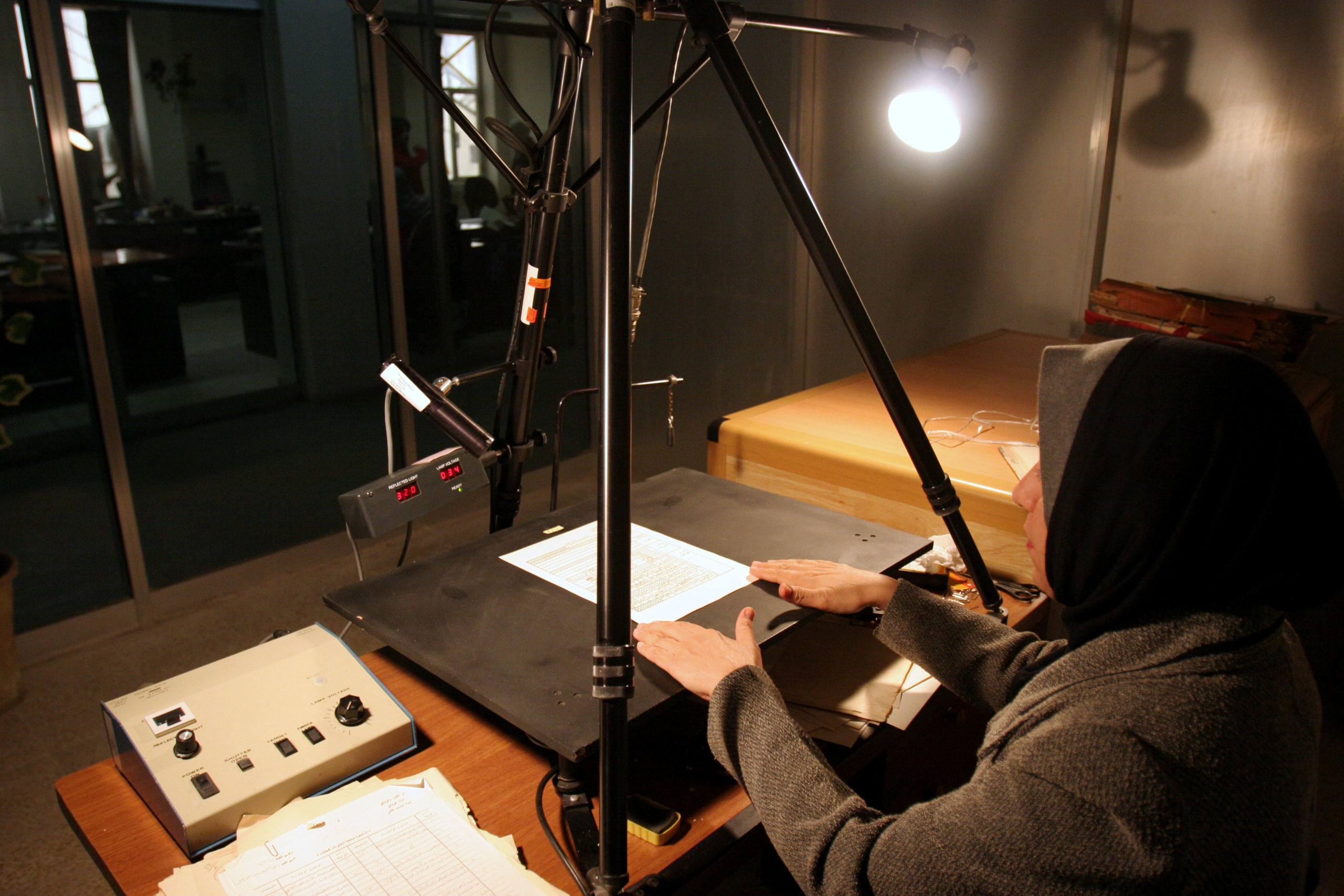
AP Photo/Samir Mizban.
A whole system could be obsolete in years, if not months. Here’s how the Texas Record explains the risk:
Unfortunately, we tend to minimise the risk that “archived” digital files can and do become corrupted, unstable or even lost, risking the validity of recorded history. How many backups in how many locations are necessary to preserve these records? How much will it cost to continuously upgrade hardware and software for the next ten years?
Microfilm, on the other hand, could last 500 years. The US National Archive still uses it too, explaining that “the equipment needed to view microfilm images is simple, consisting of light and magnification. Digital images, on the other hand, consist of a wide variety of machine codes that require computer hardware and software to be made visible.” Of course, Iraq’s National Library is digitising the texts it is preserving with microfilm — in order to allow more Iraqis to access it.
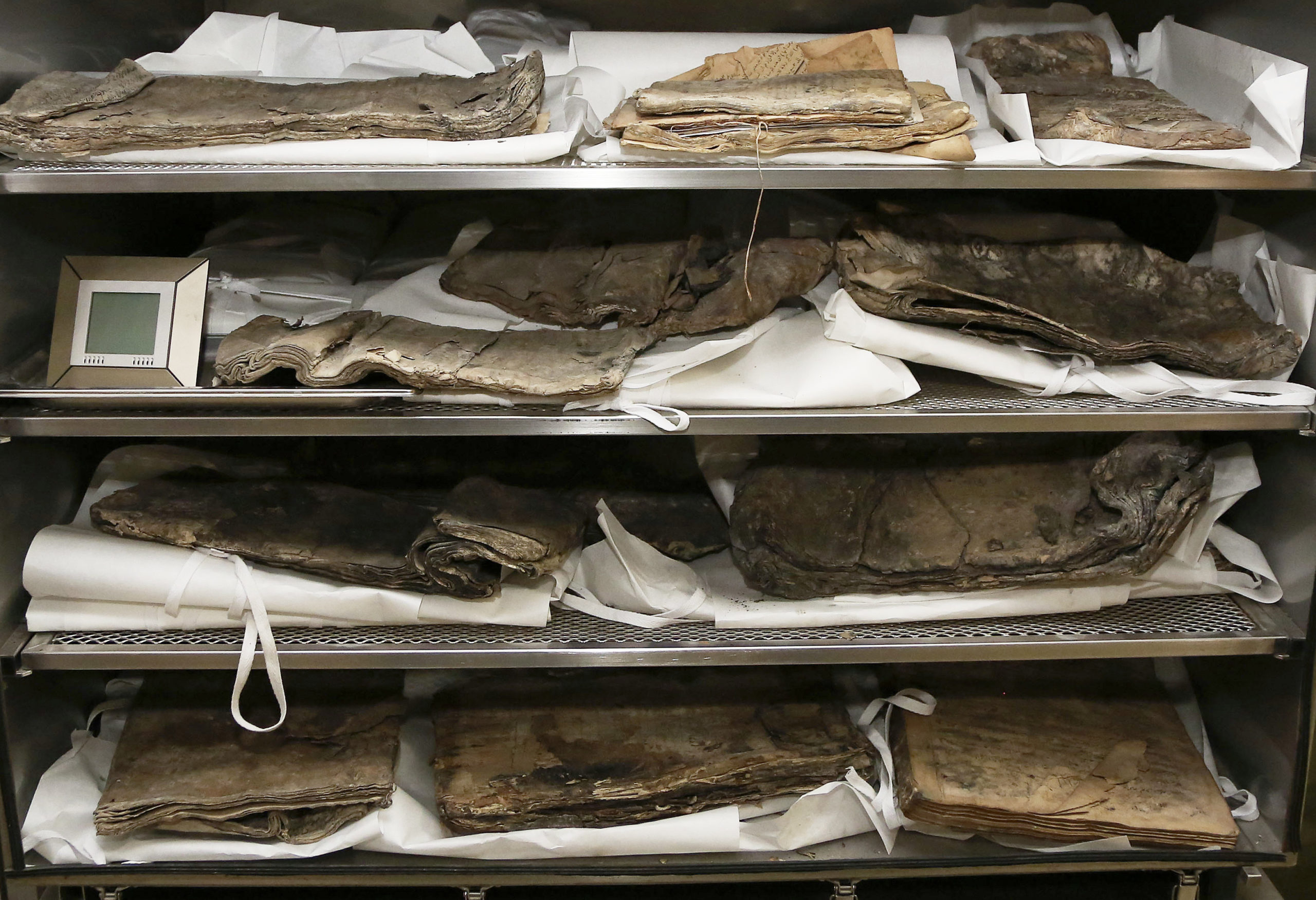
Picture: AP Photo/Karim Kadim
A Library Under Siege, Yet Again
The microfilming and digitization process has been underway for more than a decade. The library saw as many as 400,000 pages destroyed during the American invasion of Baghdad in 2003 — when US troops broke water pipes that inundated the library and flooded as many as 4000 rare books. The library itself was “engulfed in flames” and looted.
It was “a national disaster on a large scale”, library director Saad Eskander said at the time. Eskander and his staff soon began rebuilding. He headed up a huge digitisation project, microfilming as many as 500,000 documents in the library as of this 2013 interview. “Last year, with financial help from the EU and in partnership with the Italian NGO Un Ponte Per, we were able to implement an Iraq-wide training course on digitalization, database and web management,” Eskander explained. New microfilm machines and training for employees has allowed the library to speed up the project of preserving these documents digitally.
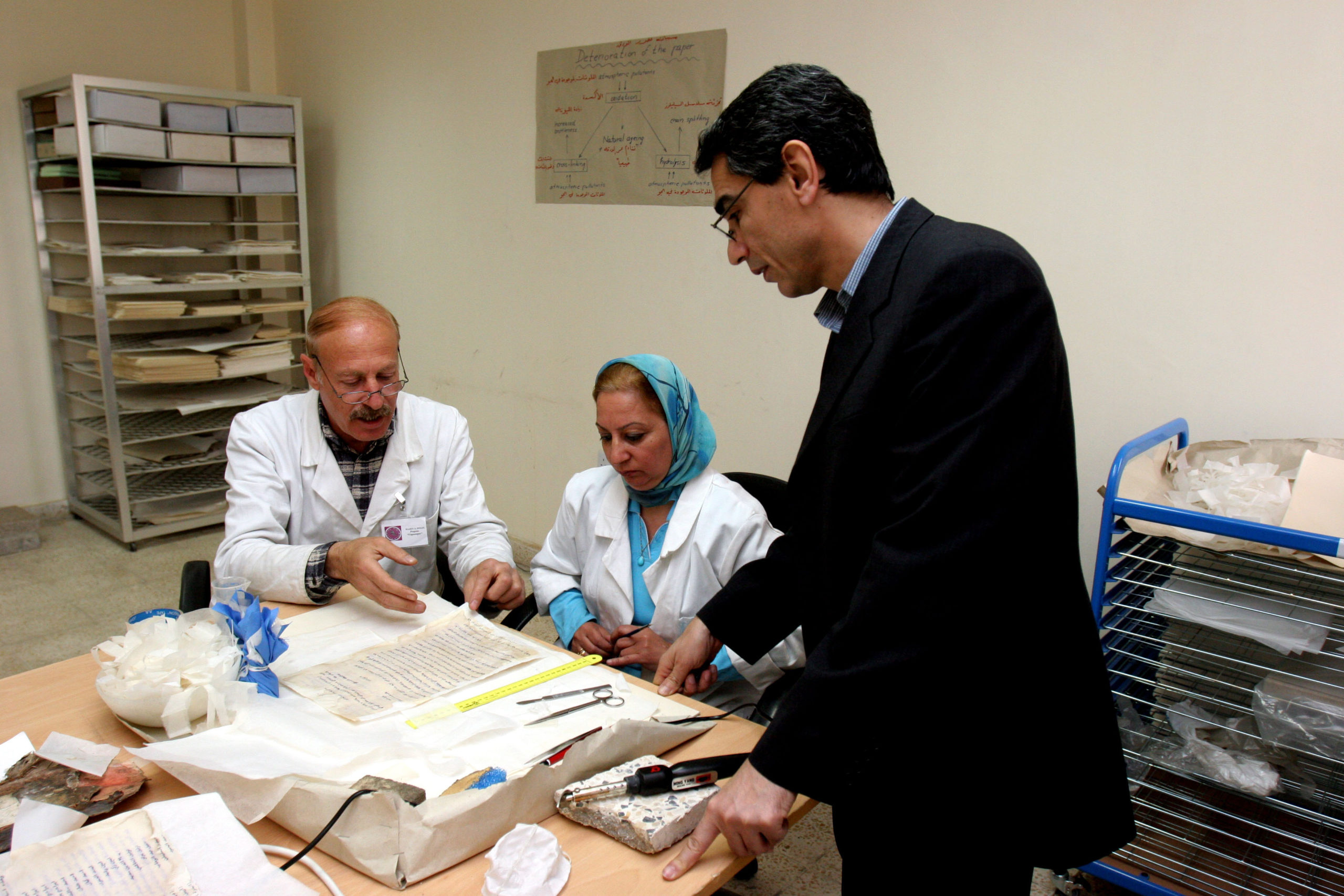
Eskander is on the right in this 2007 photo.
But it hasn’t been easy, amidst the political turmoil and violence of the past decade. “Hardly a week goes by without at least one of library’s 450 staff members or their families receiving a death threat or worse,” the AP reported in 2007. Here’s a library restorer named Alaa Jassim working on one book that was recovered from a “sewage-filled Baghdad basement” after the invasion:
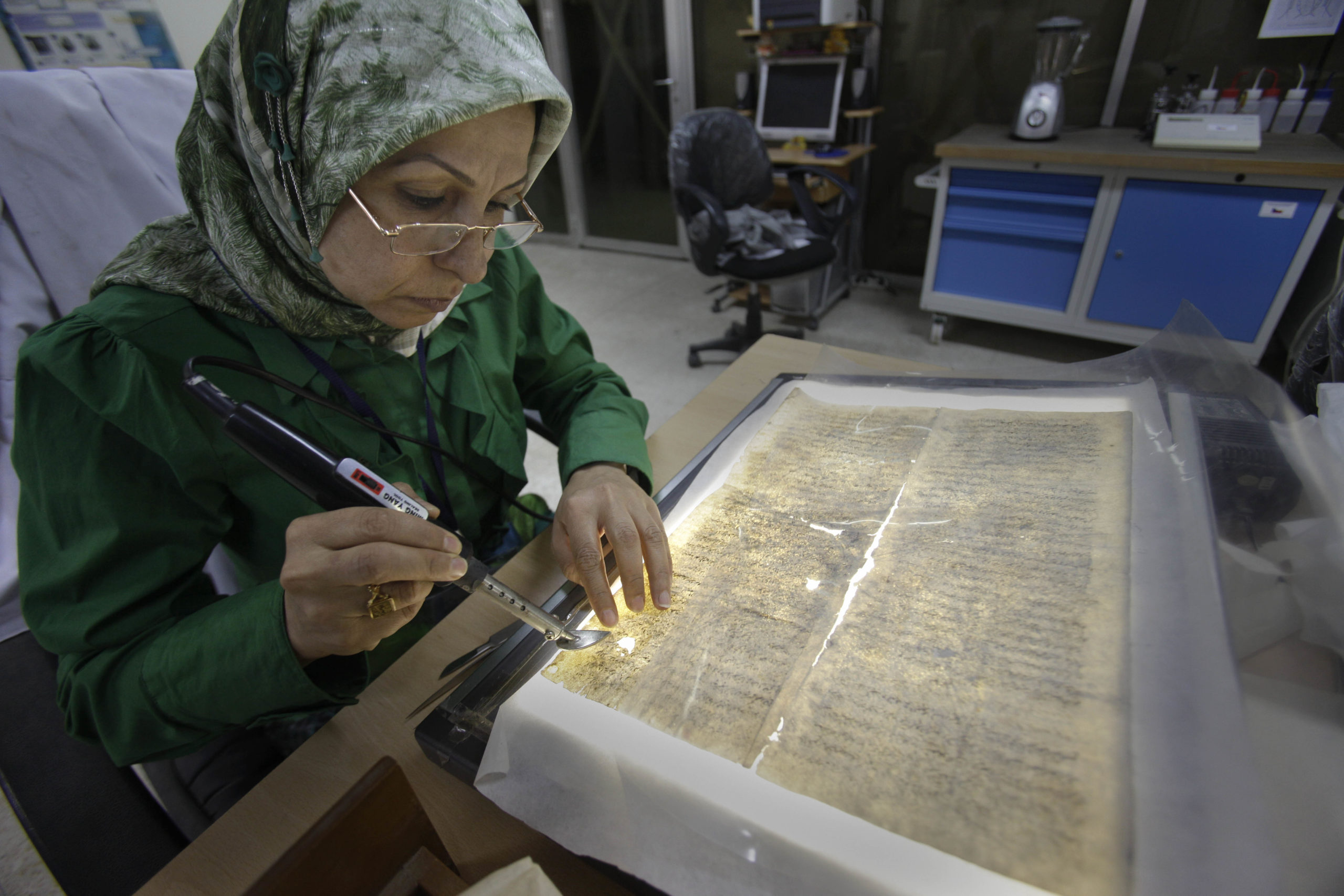
AP Photo/Samir Mizban. Bottom: AP Photo/Khalid Mohammed.
In 2013, the city unveiled plans for a new six-story library, designed by Iraqi architect AMBS — as well as a “digital library” specifically devoted to the library’s growing archives. “The idea is that readers can use our digitalised audio-visual collections, periodicals, books and records on-site or via the internet,” said Eskander. Now, the work he and others have done to rebuild the library and restore its contents is being threatened yet again.
Why Does ISIS Want To Destroy These Texts?
Most of us would assume that ISIS is interested in the money these texts could garner on the black market — and that might be true. But it also has to do with the legacy of these artifacts, which are associated with both the regimes ISIS sees as its enemies, as well as the West in general. Yale professor of Assyriology named Eckart Frahm gave a more nuanced explanation of why ISIS is so interested in broadcasting their cultural vanquishments to the world in an interview with YaleNews earlier this year:
On one hand, ISIS tries to eradicate Assyrian sites because the ancient civilisation they represent was used by previous political leaders in Iraq to build some kind of national identity across religions, sects, and ethnic groups — something to which ISIS is strongly opposed. And secondly, the group seeks to inflict pain on the West, which considers the civilizations of ancient Mesopotamia, for good reasons, as one of the roots of its own culture and has sponsored much of the scholarship exploring them. Many ISIS supporters operating in Iraq are foreigners from the West who are well aware of this.
So it’s not just looting — it’s also about putting the destruction of symbols of the old regime and the West on the world stage.
For now, employees at the library are working hard to create an archival mirror of its remaining texts, so that even if ISIS does succeed in destroying them, they will remain as microfilm-borne treasure for decades — possibly millennia.
Pictures: AP Photo/Karim Kadim
